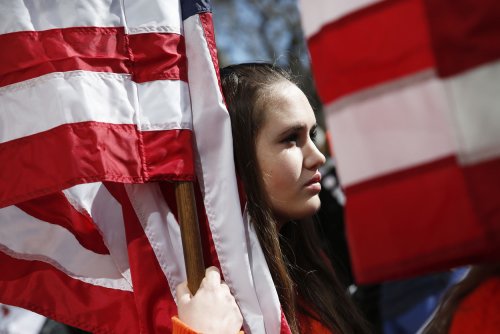A farmer in Indiana prepares his field for planting. Because of the wet weather, planting far behind in most Midwestern states. Photo by Jessie Higgins/UPI
EVANSVILLE, Ind., May 24 (UPI) -- Agricultural economists fear the Trump administration's new tariff relief program will encourage farmers to plant more soybeans this spring that cannot be sold.
The 2019 Market Facilitation Program promises to pay farmers $14.5 billion to offset losses incurred during the China trade war. Commodity crop producers -- like soy growers -- will be paid based on the number of acres they plant.
"The way it works is, that payment encourages planting," said Gary Schnitkey, a professor of agricultural and consumer economics at the University of Illinois.
The problem with that, Schnitkey said, is if China still is not buying those beans come fall harvest time, many will remain stored on farms -- unsold.
A record amount of soybeans already is stored on farms across the United States this year. China was buying around 30 percent of America's crop before that government slapped a high retaliatory tariff -- a tax paid by importers -- on U.S. beans last summer, making them too expensive for Chinese importers to buy.
There is now a huge surplus of American beans, which has driven the price to its lowest in more than a decade. And if more beans are planted this spring, that surplus will continue to grow, which could force the price down get more - and make it all the more difficult to recover.
"Short-term, stair-stepped subsidies are a poor remedy for trade," the Iowa Soybean Association said in a statement. "They stimulate production but not sales and therefore do little to undo the long-term log jam caused by not selling soybeans to destinations like China.
"[The tariff relief] could very well bump planted soybean acres and thus production, almost assuring that the pile of soybeans will not be reduced."
Farmers had planned to plant about 4.5 million fewer acres of soybeans (about 5 percent) in 2019, replacing many of those acres with corn, according to estimates by the U.S. Department of Agriculture.
However, an abnormally wet spring has prevented farmers across the Midwest from planting that corn. As of Monday, less than half of the corn fields had been planted across the country. On an average year, that figure is around 80 percent. Several key farming states were much further behind.
"I've never seen anything like it," said Lindsay Greiner, a board president for the Iowa Soybean Association, who grows corn and soy. "There are areas like Indiana and Ohio where they don't really have anything down."
If those acres are not planted by June, it will be too late, Greiner said. At that point, farmers must decide whether to plant soybeans, which can be planted later than corn without impacting yields, or to plant nothing.
Planting nothing is a viable option, Greiner said. Most farmers carry preventative planting insurance that will pay them if they're unable to get their seeds in the ground. But with the USDA now offering payments per planted acre, it might make more sense for farmers to fill their fields with soy instead.
"It's a perfect storm," Schnitkey said. "We've got tariffs and late planting and the Market Facilitation program. It's a confusing brew going on."















